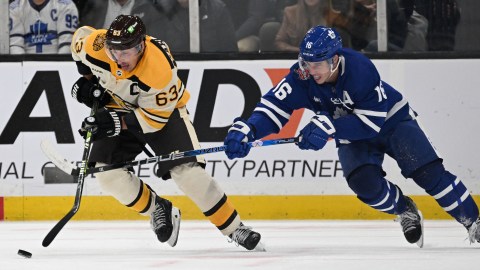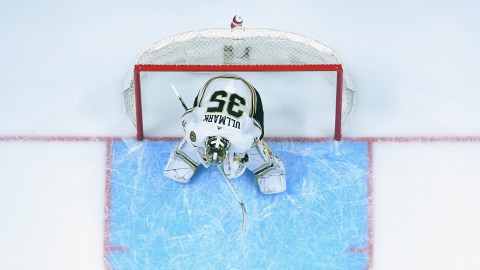 BOSTON — It’s really not that hard to figure out how the Bruins dropped Game 1 of their first-round Stanley Cup playoff series to the Detroit Red Wings on Friday night.
BOSTON — It’s really not that hard to figure out how the Bruins dropped Game 1 of their first-round Stanley Cup playoff series to the Detroit Red Wings on Friday night.
The Red Wings were able to steal away home-ice advantage with a 1-0 win in the first game of the best-of-seven series. The game was tightly contested and likely the first chapter in what may become an epic first-round series. But there’s a simple answer as to why the Wings were able to come away the victors, and much of that centers around puck possession.
When Detroit is playing its best hockey, it’s because the Wings are controlling the puck. They did just that for extended periods of time Friday night, which allowed them to take away some of the Bruins’ strengths. Detroit possessed the puck for the occasional game of keep-away along the walls in the Boston zone, which took away the Bruins’ ability to get involved physically and feed off of that aspect of the game. When the Red Wings had the puck, it took away any chance the B’s had of getting pucks in deep, getting in on the forecheck and creating chances that way.
“I think the one issue for tonight is we didn’t have the puck tonight,” Bruins coach Claude Julien said. “We had it, we’ve gotta start putting pucks in areas where we can get it back. We have to get pucks in areas where once we get it, we can hang on to it. Tonight, I don’t think we played with the puck as much as we normally do.”
The Bruins actually ended up outshooting the Wings, as Boston put 25 shots on Detroit goalie Jimmy Howard to just the 24 shots on goal the Red Wings registered. But that only tells part of the story. Detroit ended up generating 54 shot attempts (shots on goal, shots blocked, shots that missed the net), while Boston only attempted 42 shots.
When the Bruins actually did get shots to Howard, he didn’t have much trouble stopping them. Howard got good looks at the shot attempts all night long, as Detroit did a solid job of keeping the slot clear. The Red Wings also kept the Bruins on the outside, which limited the legitimate scoring chances.
That’s not to say that the Bruins played a bad game, though. Boston was strong defensively and had its chances, especially late where they started to tilt the ice in the third period. However, it was only a matter of time before Detroit broke through, and that’s what happened with 3:01 to play in the third period. Datsyuk showed why he’s one of the best players in the world as he darted around defenders and into the Boston zone before snapping off a wicked wrist shot that beat Tuukka Rask for the game’s lone goal. When you have the puck that much, you’re bound to break through at some point.
So while the issue is simple, the solution isn’t as clear-cut. The Bruins have to find a way to work through the stingy defense the Wings play and get back to creating chances.
“They’re right there, they have a close gap and (they’re) tight,” Bruins center Patrice Bergeron said. “So it’s about creating some speed and going on the offense that way.”
The Bruins shouldn’t need any reminders as to how effective the Red Wings can be when it comes to the puck possession battle. The B’s expected a tight-checking series, and that was certainly the case in Game 1. Now it’s on Boston to find a way to start breaking through starting on Sunday in Game 2.




